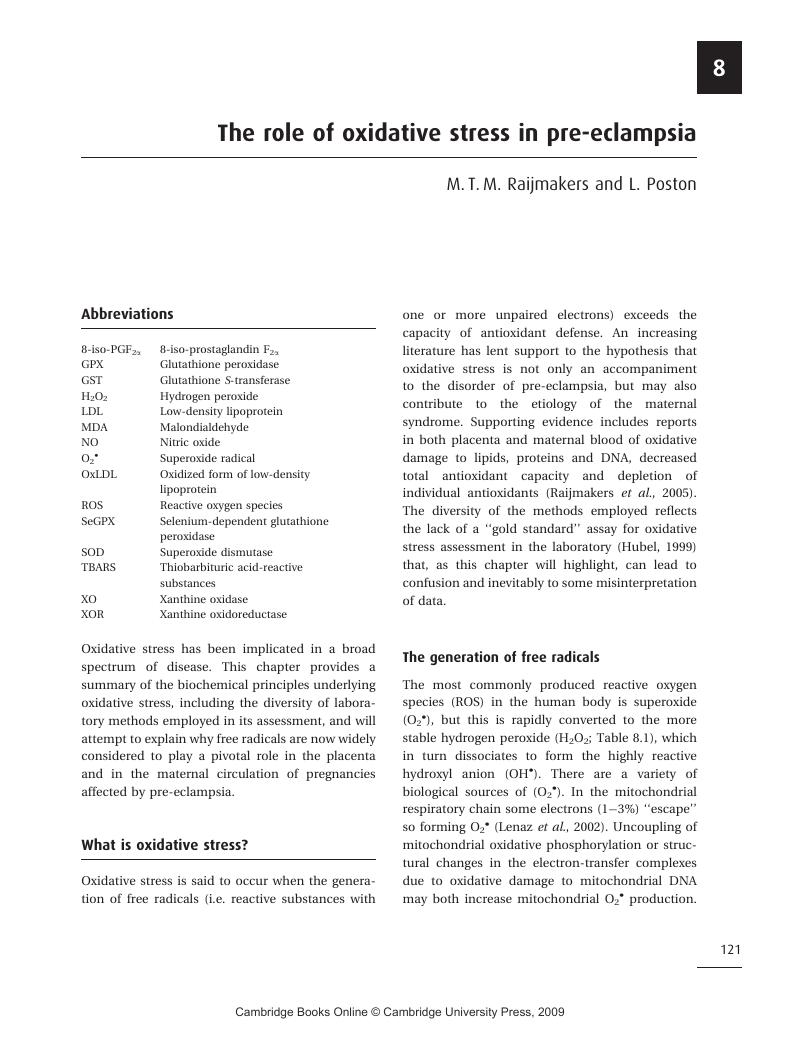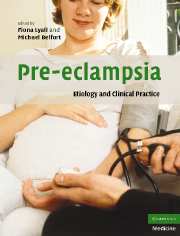Book contents
- Frontmatter
- Contents
- List of contributors
- Preface
- Part I Basic science
- 1 Trophoblast invasion in pre-eclampsia and other pregnancy disorders
- 2 Development of the utero-placental circulation: purported mechanisms for cytotrophoblast invasion in normal pregnancy and pre-eclampsia
- 3 In vitro models for studying pre-eclampsia
- 4 Endothelial factors
- 5 The renin–angiotensin system in pre-eclampsia
- 6 Immunological factors and placentation: implications for pre-eclampsia
- 7 Immunological factors and placentation: implications for pre-eclampsia
- 8 The role of oxidative stress in pre-eclampsia
- 9 Placental hypoxia, hyperoxia and ischemia–reperfusion injury in pre-eclampsia
- 10 Tenney–Parker changes and apoptotic versus necrotic shedding of trophoblast in normal pregnancy and pre-eclampsia
- 11 Dyslipidemia and pre-eclampsia
- 12 Pre-eclampsia a two-stage disorder: what is the linkage? Are there directed fetal/placental signals?
- 13 High altitude and pre-eclampsia
- 14 The use of mouse models to explore fetal–maternal interactions underlying pre-eclampsia
- 15 Prediction of pre-eclampsia
- 16 Long-term implications of pre-eclampsia for maternal health
- Part II Clinical Practice
- Subject index
- References
8 - The role of oxidative stress in pre-eclampsia
from Part I - Basic science
Published online by Cambridge University Press: 03 September 2009
- Frontmatter
- Contents
- List of contributors
- Preface
- Part I Basic science
- 1 Trophoblast invasion in pre-eclampsia and other pregnancy disorders
- 2 Development of the utero-placental circulation: purported mechanisms for cytotrophoblast invasion in normal pregnancy and pre-eclampsia
- 3 In vitro models for studying pre-eclampsia
- 4 Endothelial factors
- 5 The renin–angiotensin system in pre-eclampsia
- 6 Immunological factors and placentation: implications for pre-eclampsia
- 7 Immunological factors and placentation: implications for pre-eclampsia
- 8 The role of oxidative stress in pre-eclampsia
- 9 Placental hypoxia, hyperoxia and ischemia–reperfusion injury in pre-eclampsia
- 10 Tenney–Parker changes and apoptotic versus necrotic shedding of trophoblast in normal pregnancy and pre-eclampsia
- 11 Dyslipidemia and pre-eclampsia
- 12 Pre-eclampsia a two-stage disorder: what is the linkage? Are there directed fetal/placental signals?
- 13 High altitude and pre-eclampsia
- 14 The use of mouse models to explore fetal–maternal interactions underlying pre-eclampsia
- 15 Prediction of pre-eclampsia
- 16 Long-term implications of pre-eclampsia for maternal health
- Part II Clinical Practice
- Subject index
- References
Summary

- Type
- Chapter
- Information
- Pre-eclampsiaEtiology and Clinical Practice, pp. 121 - 137Publisher: Cambridge University PressPrint publication year: 2007



